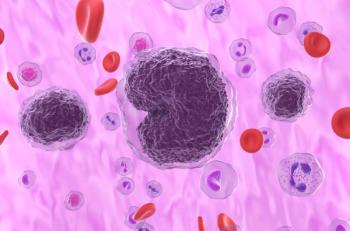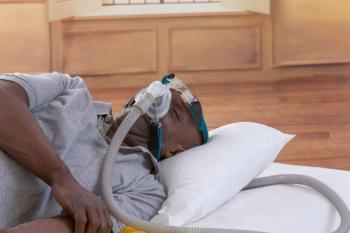
Adding Zanubrutinib, Lenalidomide to R-CHOP May Benefit High-Risk Patients With DLBCL
High-risk patients with diffuse large B-cell lymphoma (DLBCL) may benefit from being treated with a regimen that adds zanubrutinib and lenalidomide to R-CHOP (a combination of the monoclonal antibody rituximab plus the chemotherapy regimen of cyclophosphamide, doxorubicin, vincristine, and prednisone).
Adding zanubrutinib and lenalidomide to R-CHOP (a combination of the monoclonal antibody rituximab plus the chemotherapy regimen of cyclophosphamide, doxorubicin, vincristine, and prednisone) (ZR2-CHOP) for high-risk patients with diffuse large B-cell lymphoma (DLBCL) may result in a high complete response rate (CRR).
Researchers from China presented the findings at the European Hematology Association 2021 Virtual Congress. They conducted a single-arm retrospective observation study of 10 patients with DLBCL aged 18 to 75 years, who were enrolled between July 2020 and February 2021. Most of the patients (n = 9) were treatment naïve and 1 patient had relapsed/refractory DLBCL. This one patient experienced disease progression after 4 cycles of bendamustine plus rituximab.
Seven patients were classified as the high-intermediate and high-risk group, according to the National Comprehensive Cancer Network International Prognostic Index.
The patients received oral zanubrutinib 160 mg twice daily continuously from day 0 and lenalidomide 25 mg daily from days 1 to 7. They were given intravenously administered rituximab (375 mg/m2 day 0), cyclophosphamide (750 mg/m2 day 1), doxorubicin (50 mg/m2 day 1), vincristine (1.4 mg/m2 day 1), and oral prednisone (50 mg/day days 1-5).
Before treatment and after 3 and 6 cycles, circulating tumor DNA (ctDNA) was detected to evaluate tumor mutational burden.
The median follow-up was 5 months and all patients completed at least 3 cycles of treatment. The overall response rate was 100.0%: 9 patients achieved a complete response (CR) and 1 patient achieved a partial response. Only 4 patients had received all 6 cycles of treatment, and they all achieved CR and undetectable ctDNA.
The most common hematological adverse events were grade 3-4 decreased lymphocyte counts (70.0%), decreased neutrophil counts (30.0%), thrombocytopenia (20.0%), and anemia (20.0%). Nausea and fatigue were the most common nonhematological adverse events.
The researchers noted that ZR2-CHOP could be a promising treatment choice for high-risk patients with DLBCL.
“ZR2-CHOP for high-risk DLBCL patients with fair physical condition could achieve high CRR and high proportion of early-stage undetectable ctDNA,” they concluded. “The overall tolerability was under control.”
Reference
Zhu H, Sha Y, Wu W, et al. Zanubrutinib, lenalidomide plus R-CHOP (ZR2-CHOP) as the treatment for diffused large B-cell lymphoma (DLBCL). Presented at: EHA2021 Virtual Congress; June 9-17, 2021. Poster EP548.
Newsletter
Stay ahead of policy, cost, and value—subscribe to AJMC for expert insights at the intersection of clinical care and health economics.













































